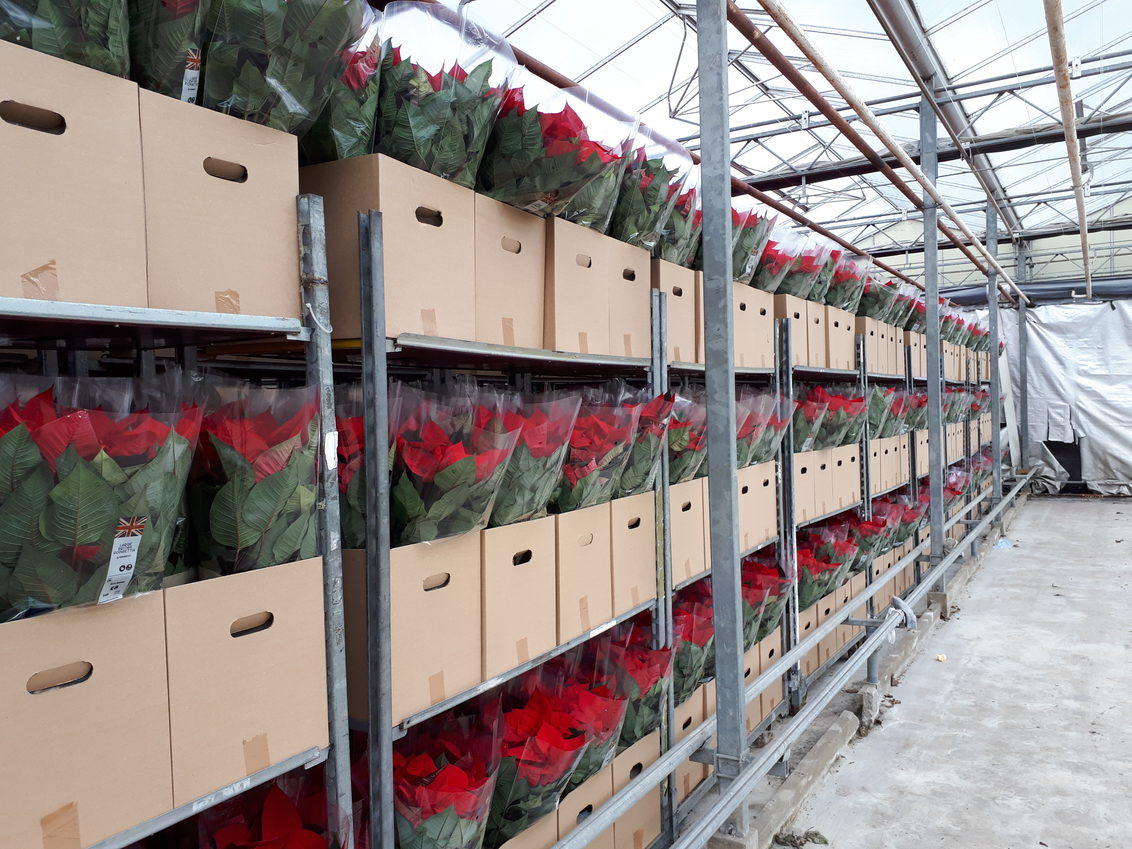Growth regulators tested for poinsettia
I was interested to catch up with a recent webinar summarising the findings from work this autumn by AHDB’s Bedding and Pot Plant Centre on PGRs for poinsettia – especially as the trials involved Syngenta’s Bonzi, and our new adjuvant Elasto G5 which we are planning to launch in the UK by the end of the year.
Bonzi (paclobutrazol) is now one of the few PGRs with label approval for use on protected ornamentals, which is particularly important because of the confidence that offers in terms of effectiveness and crop safety.
Poinsettias are shade-avoiding plants, which is why they tend to stretch on the nursery without a reliable PGR programme. The stretching is influenced by the plant hormone gibberellic acid. Bonzi works by inhibiting its production, which results in stem and leaf cells dividing more slowly, and a consequent reduction in stem growth and leaf expansion, without affecting the number of breaks.
Chlormequat-type PGRs can influence the break number but are only available in the UK in products with extension of use authorisations (EAMU), so it was helpful to see how products based on chlormequat, or on ethephon + mepiquat (which has a similar mode of action), could best be used in programmes under their current EAMU conditions.
In a trial crop of Infinity, potted week 30, pinched week 33, the first PGR applications were made in week 39, guided by graphic tracking. A five spray programme with chlormequat as the first two sprays, followed by Bonzi, looked to give a particularly good plant shape with large bracts.
The trial also confirmed why Bonzi is so useful later in the crop cycle: it was safe and effective applied at the end of October when bract colour was already visible.
The adjuvant Elasto G5 was tested with a reduced-rate application (0.83ml/litre) of the ethephon + mepiquat product. Height control was similar to the PGR applied alone at 1.67ml/litre. Elasto G5 was just as effectively used with a reduced rate of the chlormequat product. Using Elasto G5 in this way to get the same result from a lower dose of PGR may give you more flexibility in number of applications while remaining within total crop dose restrictions in the EAMU conditions.

Keep an eye on rates and volumes
We talk a lot in our Art of Application programme about spray water volumes, so it was also useful to see from these trials how water volume affected Bonzi’s performance. Bonzi was applied in a programme of five sprays of 0.35ml/litre or 0.5ml/litre in 300 litres/ha; or 0.35ml/litre in 600 litres/ha.
In this case the higher water volume also represented a much higher application rate so led to a much stronger effect, simply from getting a larger quantity of the active ingredient onto the leaves. This was a response to the additional active ingredient rather than a result of better application. Although not included in this trial, I suspect even better results would be achieved with the same amount of active in a lower volume – 0.7ml/litre in 300 litres/ha.
But it was also a reminder of the need to watch volumes carefully, especially earlier in the crop cycle when the plant has yet to spread to the full width of the pot. If you apply too high a rate then, the spray can run off with a risk of the product soaking into the growing media or wetting the capillary mat where it can persist, and be taken up by the roots. Bonzi is a strong PGR and isn’t designed, or approved, for root uptake or growing media application. As one of Elasto G5's attributes is to help prevent run-off, it will be worth considering in this context, with an appropriately adjusted Bonzi dose.
Should you choose from the range of PGRs available under EAMUs, check for any restrictions on, for example, the number of permitted applications; and bear in mind that the effective and crop-safe rates for poinsettias are likely to be lower than specified.
You can watch the webinar here.
